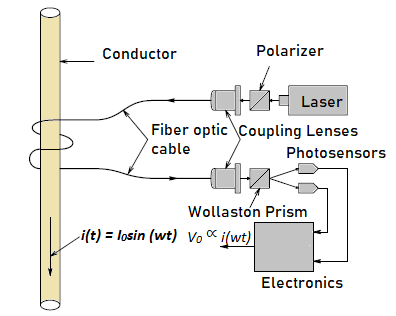Author: John Mulindi
-
Standard Process Signals for Industrial Instrumentation
Industrial measurement and control processes employ standard process signals that are used throughout all the industries. For instance, one of the most popular forms of signal transmission in modern industrial instrumentation systems is the 4-20 mA DC standard. The signal standards employed in industrial instrumentation are unique. Processes are referred to or measured as 0%…
-
Sources of Power Quality Problems
Power quality may be affected by a number of issues. Our discussion in this article focuses on various devices and events that lead to problems in power quality. The common sources of power quality problems include: Power Electronic Devices Power electronic devices cause power quality disturbances and they are also susceptible to them. Variable speed…
-
Common Terms Used When Describing Power Quality Problems
Power quality has become an important issue to electricity consumers at all levels of consumption. This has especially been intensified by the common use of sensitive equipment and non-linear loads in both industrial and the domestic environs. In this article we look at some of the common terms typically used when describing power quality problems.…
-

Magneto-Optic Current Sensors for High Voltage, High Power Transmission Lines
One of the key challenges in measuring the electrical current in high voltage, high power transmission lines, is that of measurement circuit isolation. One way of measuring heavy 60 Hz currents in a conductor is through the use of a current transformer. A current transformer typically consists of a number of turns of wire wound…
-
How the Wiegand Effect is used in Sensing Instruments
The Concept behind Wiegand Effect Based Sensors The Wiegand effect technology employs the unique magnetic properties of specially processed, small-diameter ferromagnetic wire. By causing the magnetic field of this wire to abruptly reverse, a sharp, uniform voltage is generated. This pulse is referred to as a Wiegand pulse. Sensors employing this effect need only…
-
Piezoelectric Accelerometer: Principle of Operation & Applications
An accelerometer is a sensor that is designed to measure acceleration or rate of change of speed due to motion, vibration e.g. from rotating equipment and impact events such as the deployment of an automobile airbag. Accelerometers are usually mechanically attached or bonded to an object or structure for which acceleration is to be measured.…
-
The USB-6009 Data Acquisition Card Features
The USB-6009 is a small external data acquisition and control device manufactured by National Instruments that is normally connected to a computer through a USB port. It is used in applications such as simple data logging, academic lab experiments and portable measurements. This device has analogue to digital (A/D) conversion capabilities as well as digital…
-
How X-Y Tables are used in Position Control Applications
X-Y tables are utilized as components in many systems where reprogrammable position control is desired. The X-Y table is two servo-controlled linear actuators (often servomotors and ball screws) with their linear axes perpendicular to each other. The X-Y table may move the table under a stationary tool such as a glue dispenser or may move…
-
Techniques used in Stopping DC Motors
Stopping of a motor is actually a form of speed control. Methods used to stop DC motors are in a way similar to speed control techniques. To stop a motor, you must accelerate in the direction opposite to that in which it is moving. There are two techniques of electrically stopping a DC motor, namely:…
-
Microwave Spectroscopy: Features, Types & Applications
Microwave Spectroscopy The section of the electromagnetic spectrum extending approximately from 1 mm (300,000 MHz) to 30 cm (1000 MHz) is referred to as the microwave region. Spectroscopic applications of microwaves consist of almost exclusively of absorption work in gaseous samples. With some exceptions, the various types of spectra are distinguished by their energy origins.…